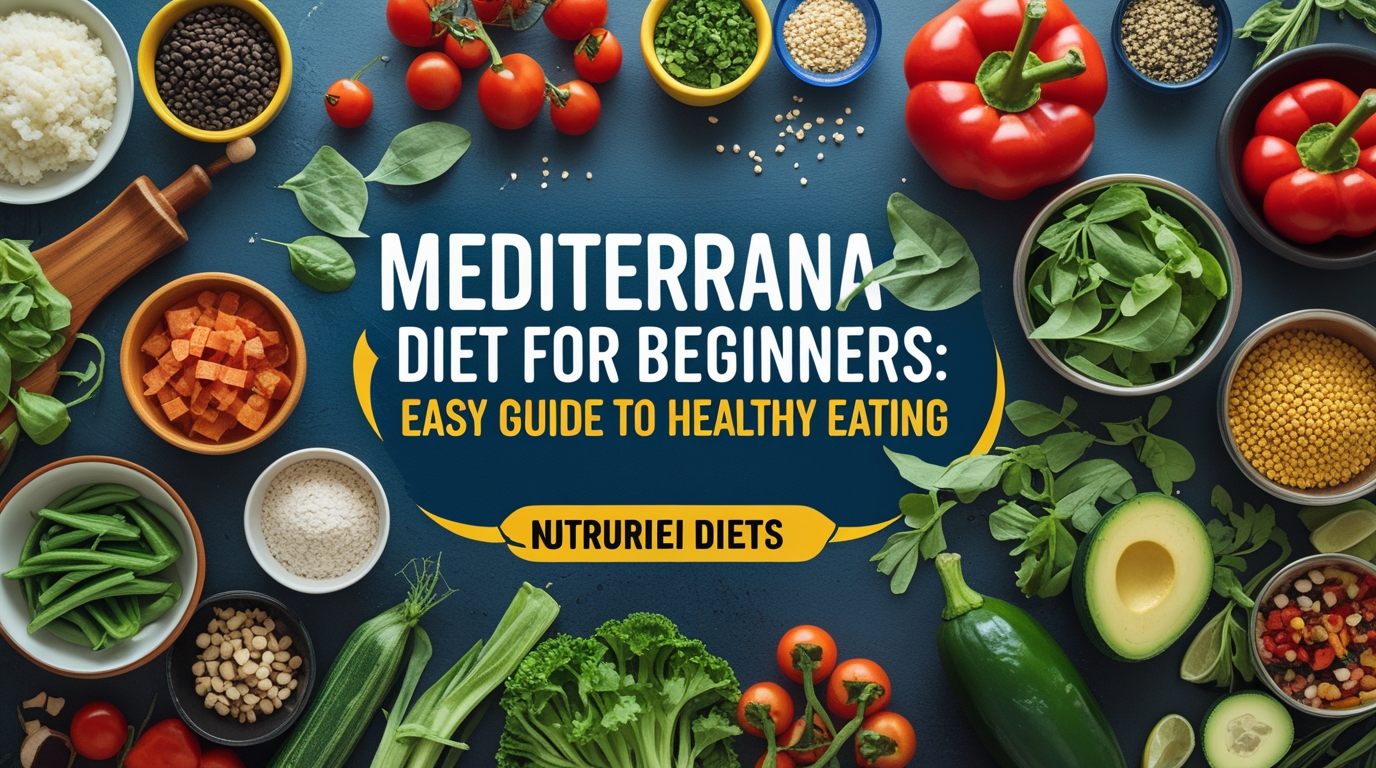**Mediterranean Diet for Beginners: Easy Guide to Healthy Eating**
Are you curious about the benefits of the Mediterranean diet? Often heralded as one of the healthiest dietary patterns, the Mediterranean diet for beginners offers a path to improved health and well-being through simple, flavorful meals. Discover how embracing this lifestyle can transform your eating habits and bring numerous health advantages. This easy guide will lead you through the essentials, helping you embark on a delicious and nutritious journey.
Understanding the Mediterranean Diet
The Mediterranean diet isn’t a typical diet but rather a lifestyle choice characterized by its emphasis on whole foods and balanced nutrition. Originating from the traditional eating habits of countries bordering the Mediterranean Sea, this diet prioritizes fresh fruits and vegetables, whole grains, and healthy fats. Let’s delve deeper into what makes this dietary approach so beneficial.
Why Choose the Mediterranean Diet?
Adopting the Mediterranean diet can lead to numerous health benefits. Research has shown that it can reduce the risk of heart disease, improve brain function, and increase longevity. Moreover, it’s known for being both sustainable and satisfying, making it a great choice for long-term health improvement.
Furthermore, studies reveal that this diet is linked to a lower incidence of chronic diseases like diabetes and obesity. Given these benefits, many people find it appealing to shift towards such a nutrient-rich dietary pattern.
Components of the Mediterranean Diet
The Mediterranean diet emphasizes a wide variety of foods that should be included on a daily and weekly basis. Here’s a breakdown:
- Fruits and Vegetables: Aim for a colorful array of produce, eaten fresh whenever possible.
- Whole Grains: Foods like whole-grain bread, pasta, and rice form the backbone of this diet.
- Healthy Fats: Incorporate plenty of olive oil, nuts, and seeds for their heart-healthy benefits.
- Lean Proteins: Enjoy fish and poultry, limiting red meat consumption to no more than a few times a month.
- Legumes and Nuts: These are excellent protein sources as well as a source of fiber.
- Dairy: Focus on low-fat dairy products, such as yogurt and cheese.
This diet not only focuses on what you eat but also how you eat. For instance, sharing meals with family and savoring each bite is a cultural element that plays a significant role.
Getting Started with the Mediterranean Diet
If you’re ready to embrace the Mediterranean diet for beginners, let’s look at how to get started.
Simple Tips to Transition Smoothly
Transitioning to the Mediterranean diet doesn’t have to be overwhelming. Here’s how you can begin:
- Start Small: Gradually incorporate more fruits and vegetables into your meals.
- Choose Whole Grains: Opt for whole-grain bread over white, and explore new grains like quinoa and farro.
- Use Olive Oil: Swap out butter or margarine for heart-healthy olive oil.
- Include Fish in Your Diet: Aim to eat fish at least twice a week, focusing on fatty fish like salmon and mackerel.
- Snack on Nuts: Keep a supply of almonds or walnuts on hand for a quick, healthy snack.
- Stay Hydrated: Water is your go-to beverage. You might enjoy a glass of wine with dinner, as is customary in Mediterranean cultures.
- Plan Balanced Meals: Use legumes, vegetables, and whole grains to create fulfilling, nutritionally complete dishes.
Focus on enjoying the process of exploring new flavors and developing new habits, rather than focusing on what you can’t have.
For more on effective approaches to starting a new dietary routine, check out our article on habit formation in healthy eating.
Building Your Shopping List
Creating a Mediterranean-inspired shopping list can simplify your transition.
- Produce: Tomatoes, cucumbers, spinach, garlic, and leafy greens.
- Proteins: Salmon, sardines, chicken, chickpeas, and lentils.
- Dairy: Greek yogurt and feta cheese.
- Pantry Staples: Brown rice, couscous, olive oil, and balsamic vinegar.
- Seasonings: Oregano, basil, paprika, and pepper.
Having a well-stocked kitchen makes it easier to prepare healthy, delicious meals at home, minimizing the temptation for processed or fast foods.
Connecting with Culture Through Food
The Mediterranean diet is not just about food – it reflects a lifestyle rich with social connections and cultural heritage. In many Mediterranean countries, meals are a time to connect with loved ones, enjoy laughter, and partake in the appreciation of simple, wholesome food.
Incorporating Social Elements
To fully embrace this approach:
- Eat Together: Regularly share meals with family and friends to build stronger relationships.
- Mindful Eating: Take the time to savor each bite, appreciating the flavors and textures.
- Cook from Scratch: Whenever possible, prepare your meals at home using fresh ingredients.
These practices not only nurture your body but also enhance mental well-being, contributing to an overall healthier lifestyle.
Mediterranean Diet Recipes to Try
To inspire your culinary journey, here are a few easy recipes to incorporate into your weekly plan:
Greek Salad with Chickpeas
A refreshing mix of tomatoes, cucumbers, onion, and chickpeas drizzled with olive oil and lemon juice. Perfect for lunch or as a side dish.
Oven-Roasted Salmon with Lemon
Simple and flavorful, this dish requires only olive oil, garlic, and lemon slices. It’s a quick way to serve up omega-3 fatty acids.
Whole-Wheat Pasta with Pesto
Toss whole-wheat pasta with homemade basil pesto and a sprinkle of Parmesan cheese for a filling, weeknight dinner.
For more recipe ideas, visit our collection of Mediterranean recipes.
Conclusion
The Mediterranean diet for beginners offers a straightforward approach to improving your health and well-being. By embracing whole foods, savoring meals, and fostering social connections, you can enjoy a richer, healthier lifestyle.
Ready to start your journey? Share your experiences or ask questions in the comments below. Don’t forget to subscribe to our newsletter for more nutrition tips and recipes delivered straight to your inbox!





Leave a Comment